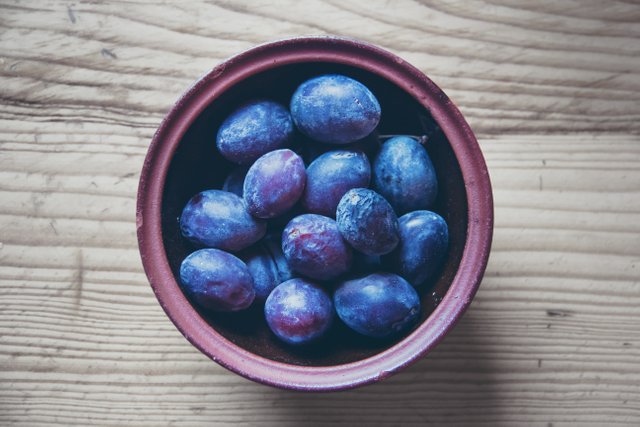
Scientists at the Indian Institute of Science in Banglor, India have published an open-access paper in Scientific Reports showing that rutin, a compound found naturally in plums, acts to block the hepatitis C virus from entering into cultured liver cells. This finding has significant implications for drug development and new therapeutic strategies for treating hepatitic C infection.
Currently, hepatitis C is believed to have infected over 150 million people across the globe, and can lead to severe liver disease including cirrhosis liver cancer. The pharmaceutic company Gilead made headlines last year with its new medication Epclusa, an extremely effective combination of two anti-viral compounds priced at $74,000 for a typical 12-week course of therapy. Although there was a public outcry at the pricing, this was actually somewhat cheaper than older medications, which could cost over $80,000 for a 12 week course. The high price of treatment means that for the hardest-hit populations, this treatment is not a viable option. The discovery of rutin as an inhibitor of hepatitis C virus entry may point the direction toward the development of new drugs which can be implemented early after exposure to the virus. Such a strategy may also be useful for hepatitis C patients requiring liver transplants by preventing the transplanted liver from becoming infected once in the recipients body.

In the report, Bose et al. tested a variety of naturally-derived extracts with previously documented liver-protective effects. After first screening the extracts for any evidence of cellular toxicity in liver culture cells, the researchers then exposed treated cells to fluorescent hepatitis C virus-like particles. The fluorescent particles allowed the researches to detect the amount of viral-particle attachment and uptake within the cells using a method called flow cytometry.
After identifying plum extract as having the most efficacy against the hepatitic c virus-like particles, the researches further screened the extract to identify which compound was responsible for the effect. Using a method called thin-layer chromatography, the extract was found to be composed of 28 distinct compounds, which were then tested in a similar fashion as the original extracts. One compound in particular stood out among the rest as the most protective, and this compound was chemically analyzed using mass-spectrometry and nuclear magnetic resonance (NMR) to identify the compound as rutin.
Once rutin was identified, the reserachers sought to determine the mechanism of action. By adding rutin at different stages of viral infection, they were able to determine that there was no protective effect once the viral-like particles had already bound to the cells, and the greatest protection was seen when rutin was present in the cell culture medium before the virus was added. Addition and then withdrawal of rutin before viral-like particle infection demonstrated no benefit. This suggested that rutin is interfering with the binding step, and may be having a direct effect on the viral-like particles themselves, rather than binding to the cells and blocking the virus. Importantly, the scientists tested rutin at extremely high concentrations and observed no cellular toxicity during their studies.
Though this will likely not lead to a cure for hepatitis C virus, the implications for ongoing treatment, prevention, and transplant-recipients may be enormous. Further studies are necessary to validate the findings, however the low toxicity of the compound and natural origins may make this an exciting discovery.
Reference
Bose, M., Kamra, M., Mullick, R., Bhattacharya, S., Das, S., Karande, A. Identification of a flavanoid isolatead from plum (Prunus domestica) as a potent inhibitor of Hepatitis C virus entry. Scientific Reports 2017;(7)3965. Epub ahead of print. doi:10.1038/s41598-017-04358-5
This article was written as a summary of scientific findings. For more detailed information, please refer to the original literature.